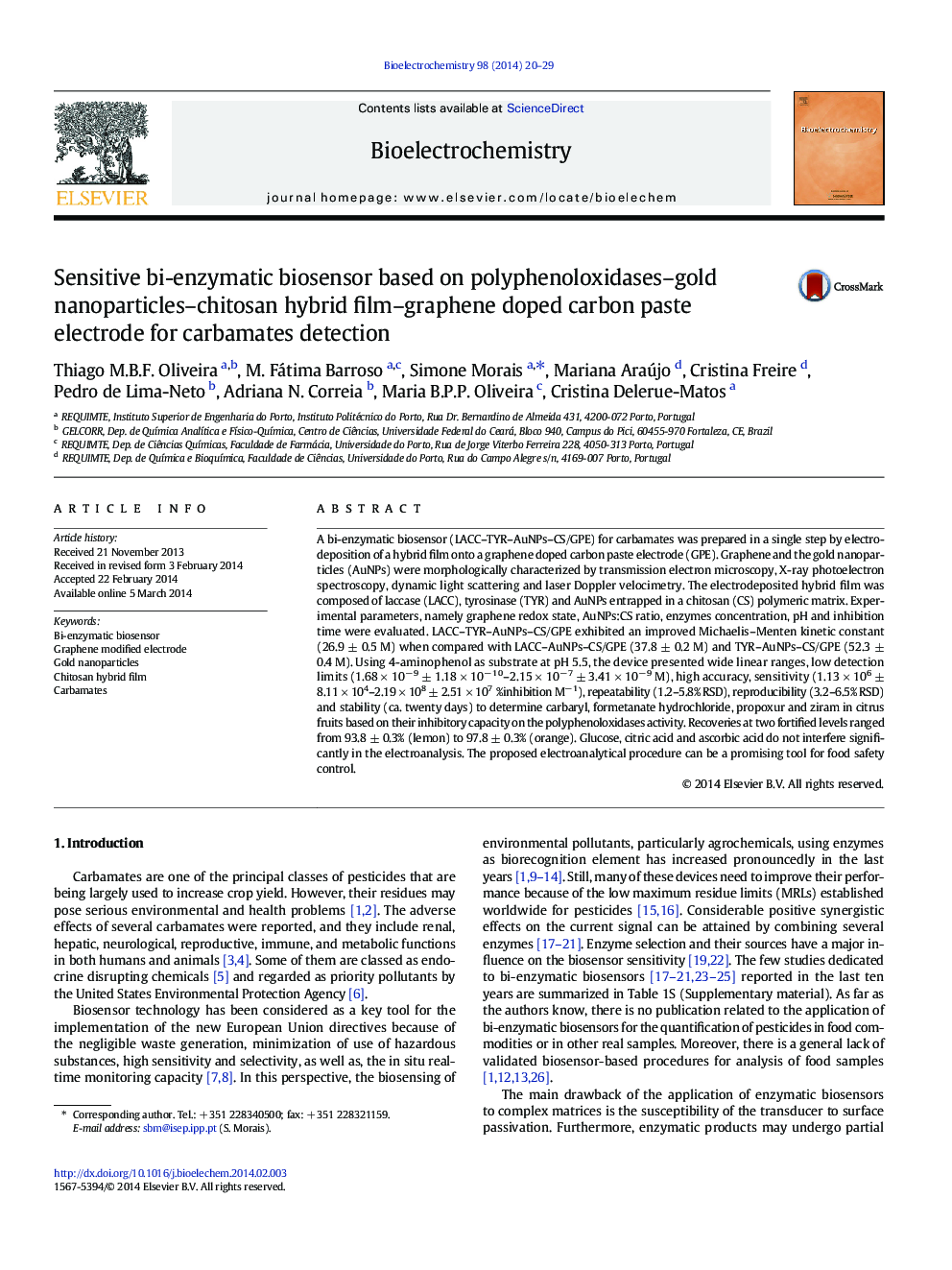| کد مقاله | کد نشریه | سال انتشار | مقاله انگلیسی | نسخه تمام متن |
|---|---|---|---|---|
| 1271018 | 1496914 | 2014 | 10 صفحه PDF | دانلود رایگان |
• Laccase–tyrosinase–AuNPs–chitosan/graphene doped carbon paste biosensor was developed.
• The bi-enzymatic biosensor was prepared by one step electroimmobilization.
• The influence of graphene redox state, AuNPs:chitosan and enzyme ratios was assessed.
• The biosensor showed excellent performance to quantify carbamates by inhibitory assay.
• The biosensor was successfully applied to fruits (93.8 ± 0.3% to 97.8 ± 0.3% recoveries).
A bi-enzymatic biosensor (LACC–TYR–AuNPs–CS/GPE) for carbamates was prepared in a single step by electrodeposition of a hybrid film onto a graphene doped carbon paste electrode (GPE). Graphene and the gold nanoparticles (AuNPs) were morphologically characterized by transmission electron microscopy, X-ray photoelectron spectroscopy, dynamic light scattering and laser Doppler velocimetry. The electrodeposited hybrid film was composed of laccase (LACC), tyrosinase (TYR) and AuNPs entrapped in a chitosan (CS) polymeric matrix. Experimental parameters, namely graphene redox state, AuNPs:CS ratio, enzymes concentration, pH and inhibition time were evaluated. LACC–TYR–AuNPs–CS/GPE exhibited an improved Michaelis–Menten kinetic constant (26.9 ± 0.5 M) when compared with LACC–AuNPs–CS/GPE (37.8 ± 0.2 M) and TYR–AuNPs–CS/GPE (52.3 ± 0.4 M). Using 4-aminophenol as substrate at pH 5.5, the device presented wide linear ranges, low detection limits (1.68 × 10− 9 ± 1.18 × 10− 10–2.15 × 10− 7 ± 3.41 × 10− 9 M), high accuracy, sensitivity (1.13 × 106 ± 8.11 × 104–2.19 × 108 ± 2.51 × 107 %inhibition M− 1), repeatability (1.2–5.8% RSD), reproducibility (3.2–6.5% RSD) and stability (ca. twenty days) to determine carbaryl, formetanate hydrochloride, propoxur and ziram in citrus fruits based on their inhibitory capacity on the polyphenoloxidases activity. Recoveries at two fortified levels ranged from 93.8 ± 0.3% (lemon) to 97.8 ± 0.3% (orange). Glucose, citric acid and ascorbic acid do not interfere significantly in the electroanalysis. The proposed electroanalytical procedure can be a promising tool for food safety control.
Journal: Bioelectrochemistry - Volume 98, August 2014, Pages 20–29
